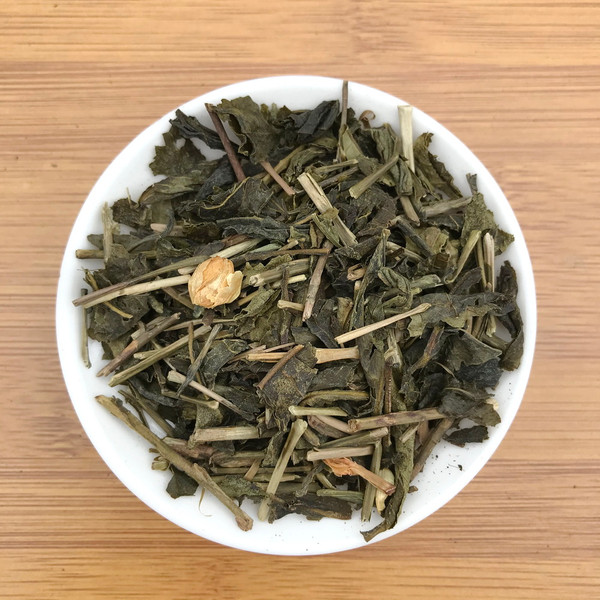Product Overview
With a history of planting tea for over 2000 years, Vietnam is one of the largest and oldest tea-producing countries in the world. Although the history of Vietnamese tea has not been well recorded as that of the Chinese or Japanese, tea-drinking occupies an essential role in Vietnamese culture, both in the past and in the present. Vietnamese Jasmine Green is an incredibly fragrant blend- one may even call it the Queen of Jasmine teas! Traditionally, Vietnamese prefer their tea green, either straight or naturally scented with flowers. This fine organic Jasmine green tea was scented in the traditional way by layering jasmine blossoms between fresh harvested green tea leaves repeatedly.
Raw materials for the production of natural jasmine tea are jasmine and green tea.
Jasmine: Flower Jasmine is a type of flower familiar to Vietnamese people with a gentle, pure fragrance. Jasmine is used for flavoring is a kind of jasmine flower cinnamon-flavored mainly in the North with single, small but very fragrant wings. Jasmine is chosen to marinate tea as a small, single winged but very fragrant.
Green tea: is famous for its characteristic delicious flavor, worthy of "first name tea" that tea lovers have donated to Thai Nguyen Viet Nam land. Anyone who loves tea, though only enjoying it once, cannot forget the faint scent of young nuggets, the soothing acrid taste, the deep sweet post of Thai Nguyen tea. The tea selected for flavoring must be a good, new tea, the tea wing does not need to be too small but must be spongy and crispy, so the tea is easy to "absorb incense".
The process of producing jasmine tea: NaturallyJasmine is usually cooked at 4.5 pm and blooms at around 8.9 pm. Because of such a rapid bloom time, when taking flowers, it is necessary to take them at the time of ripe flowers, then the flowers change from green to opaque white like sticky rice and wait until about 8.9 hours, the appropriate time most to marinate tea. Just one layer of tea sprinkled with a layer of marinated flowers, about 18 to 24 hours when the tea has absorbed all the flower scent, the wings turn from milky color to transparent color, then bring the tea to ready to remove petals. cried Tea goes to dry, for tea flavor blends with flower fragrance. Continue to marinate the flower and then dry it again about 4 or 5 times more.
Jasmine tea (trà lài) is produced in two grades similar to lotus tea. Jasmine tea has a more profound aroma than lotus tea, and lotus tea has a sweeter taste. While lotus tea is considered a specialty and is reserved for events or special meals, jasmine tea is popular as a "chaser" for Vietnamese iced coffee and is poured into the glass after the coffee is consumed, allowed to chill, and then enjoyed as a follow-up to the iced coffee in coffee shop cafes, particularly in the nightlife of major cities, where coffee shops are a popular social rendezvous on hot evenings.
Upon opening your Jasmine Green tea, your senses will be wonderfully enticed by the sweet fragrant jasmine aroma of the blend! The unbroken twisted leaves range in color from deep green to silvery tips, with a few jasmine blossoms sprinkled throughout. The cup is bold with a robust green tea taste and a long-lasting rich aromatic jasmine floral note throughout. A perfect combination of superior traditional green tea and flowery of Jasmine. Jasmine floral aroma, Full body and a clean malty finish. Feel free to invite your friends over to enjoy this beauty together!
If you’re a true jasmine tea enthusiast, we recommend that you try comparing this Vietnamese Jasmine Green with some of our other Jasmine varieties to taste and explore the differences!
Ingredients: 98% green tea, 2% jasmine and natural herbal fragrance.
Brewing Guide: Jasmine teas are typically very potent and are best brewed for under 2 minutes using cooler brewing temperatures (160 °F/70 °C). Some fancier ones will brew 3-4 times from one set of leaves.









